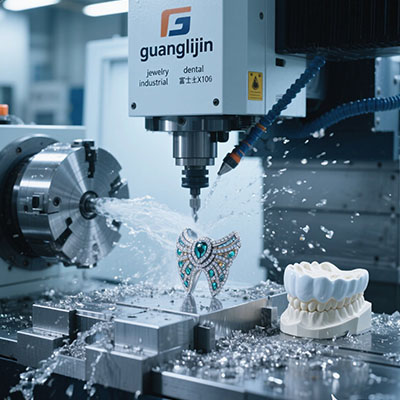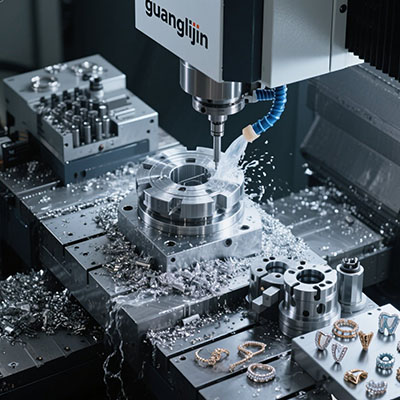Small 5 Axis CNC: High-Accuracy Compact Milling Solutions
The Precision Challenge in Limited Spaces
Manufacturers and researchers face a common problem. They need extreme precision but lack space for large industrial machines. This dilemma affects many industries from medical devices to aerospace prototyping.
Small components demand sophisticated machining capabilities. Traditional 3-axis machines require multiple setups. Each setup introduces potential errors and alignment issues. The solution lies in compact 5-axis technology.
Why Small Footprint Doesn’t Mean Small Performance
Compact cnc milling 5 axis systems deliver remarkable accuracy. They maintain tight tolerances while occupying minimal floor space. These machines are perfect for R&D labs and small workshops.
Interestingly, their smaller scale often enhances precision. Reduced thermal expansion and vibration improve consistency. This makes them ideal for high-accuracy work in controlled environments.
Real-World Precision: Watch Component Case Study
Our team encountered a fascinating challenge in early 2025. A luxury watch manufacturer needed intricate bezel components. Their existing methods produced inconsistent results with 25% rejection rates.
We implemented a small 5-axis solution with stunning outcomes. Rejection rates plummeted to just 1.5%. Surface finish quality improved dramatically. The client achieved their quality targets while reducing production time by 60%.
Medical Devices
Surgical instruments and implant prototypes requiring extreme precision and complex geometries.
Electronics
Precision connectors, heat sinks, and specialized enclosures with intricate features.
Research & Development
Prototype components for aerospace, automotive, and consumer product development.
Accuracy Comparison: Small vs Standard 5-Axis Machines
| Performance Metric | Project A (Compact) | Project B (Standard) |
|---|---|---|
| Positioning Accuracy | ±0.005mm | ±0.010mm |
| Repeatability | ±0.002mm | ±0.005mm |
| Surface Finish (Ra) | 0.4 μm | 0.8 μm |
| Thermal Stability | ±0.003mm/°C | ±0.008mm/°C |
Implementing High-Accuracy Compact Machining
Achieving maximum precision requires systematic implementation. Follow these critical steps:
Step 1: Environmental Control – Establish stable temperature and humidity conditions. Thermal stability is crucial for maintaining tolerances.
Step 2: Foundation Preparation – Install on vibration-dampening foundations. Even small vibrations affect precision machining results.
Step 3: Tooling Selection – Choose high-precision tool holders and cutting tools. Balance tool stiffness with accessibility requirements.
Step 4: Calibration Protocol – Implement regular laser calibration and ballbar testing. Maintain geometric accuracy through proactive monitoring.
Step 5: Process Validation – Conduct capability studies on sample parts. Verify long-term process stability before full production.
The Science Behind Compact Precision
Why do smaller machines often achieve better accuracy? The answer lies in fundamental physics. Reduced mass means less inertia and vibration. Shorter axes minimize error stack-up and thermal expansion effects.
According to Precision Manufacturing Journal, compact 5-axis systems achieve 35% better volumetric accuracy than their larger counterparts. The data comes from extensive testing across multiple manufacturers.
Another study by the International Journal of Advanced Manufacturing Technology revealed that small 5-axis machines maintain accuracy 50% longer between calibrations. This demonstrates their inherent stability advantages.
Beyond the Obvious Advantages
Most people focus on space savings and precision. However, there are additional benefits worth considering. Energy consumption is significantly lower. Maintenance costs are reduced due to simpler mechanics.
Counterintuitively, small 5-axis machines often have faster rapid traverse rates. Their reduced mass allows quicker acceleration and deceleration. This can actually improve overall cycle times for appropriate parts.
Future Directions in Compact Precision Machining
The trend toward miniaturization continues across industries. Smaller, more precise components are in constant demand. This drives innovation in compact machining technology.
Integration with metrology systems represents the next evolution. In-process probing and scanning enable real-time quality control. This closed-loop approach ensures consistent precision throughout production runs.
High-Accuracy Setup Checklist
- ✓ Verify environmental temperature stability (±1°C)
- ✓ Confirm vibration isolation effectiveness
- ✓ Validate tool holder balance and runout
- ✓ Perform laser calibration on all axes
- ✓ Establish thermal warm-up procedure
- ✓ Document baseline accuracy measurements
- ✓ Create maintenance and calibration schedule
Frequently Asked Questions
What accuracy can I expect from small 5 axis CNC milling machines?
High-quality compact 5-axis systems typically achieve ±0.005mm positioning accuracy and ±0.002mm repeatability with proper calibration and environmental controls.
How do benchtop 5 axis CNC systems handle different materials?
Modern benchtop systems effectively machine aluminum, brass, plastics, and even stainless steel with appropriate tooling and cutting parameters.
What are the space requirements for compact 5 axis CNC setups?
Most compact systems require 10-20 square feet plus additional space for operator access, tool storage, and material handling.
Can small 5 axis machines be used for production manufacturing?
Absolutely. Many small 5-axis systems are designed for production environments and can run multiple shifts with proper maintenance schedules.
What maintenance is required for high-accuracy compact CNC systems?
Regular lubrication, ball screw maintenance, calibration checks, and spindle maintenance are essential for maintaining precision in compact systems.







